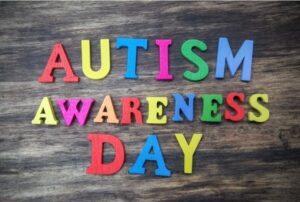As parents, we’ve all had moments where our child suddenly loses control of their emotions and starts crying or acting out without us knowing why. But what if we could help our children express their emotions more effectively? By doing so, many of these emotional outbursts can be avoided. Let’s go through five simple ways to help your child express their emotions, and make their emotional journey a smoother one.
1. Listen and Give Your Child Space to Express Themselves
When your child is having an emotional breakdown, the first and most important step is to listen. Try to put down what you're doing and focus on your child’s needs and feelings. Often, children’s emotional outbursts aren’t because they’re being “bad,” but because they’re unable to express their feelings with words.
I remember one time when my son, Ethan, was very upset because his friend didn’t play with him at school. I took the time to listen to him, asking, "Why do you feel upset?" He slowly started explaining, "I feel sad because he didn’t want to play with me." Instead of reacting right away, I gave him the space to talk, and he felt better after expressing his emotions.
Tip: Every time your child feels upset, give them a “safe space” to express their feelings. Let them speak without judgment, and they’ll gradually feel more comfortable sharing their emotions with you.
2. Help Your Child Expand Their Emotional Vocabulary
Have you ever noticed that children often use “angry” to describe all negative emotions? In reality, they could be feeling “frustrated,” “disappointed,” or “hurt.” As parents, we can help our children learn a wider range of emotional words, enabling them to better understand and express their feelings.
For example, I make a point to ask Ethan, "Are you feeling angry or disappointed?" instead of just assuming. We then talk about what each word means and how it applies to his feelings. Over time, he learns to use specific terms for different emotions, making it easier for him to explain what he’s going through.
Tip: Discuss different emotions with your child daily. Introduce them to new emotional vocabulary and have conversations about what each feeling means, so they can better understand themselves.
3. Use Art to Help Your Child Express Emotions
Not every child is comfortable expressing complex emotions with words, and that’s perfectly okay. Art is a powerful tool that can help kids express themselves when words fall short. Whether it’s through drawing, writing stories, or playing music, art allows children to convey their feelings in a non-verbal way.
I remember one time when Ethan was upset after a fight with a friend. Instead of pushing him to talk, I encouraged him to draw how he felt. He ended up drawing a picture of a rainbow after a storm, which symbolized how he was starting to feel better. This gave me a clear understanding of how he was processing his emotions without him having to say a word.
Tip: If your child is hesitant to talk, encourage them to use art, writing, or music to express their feelings. It’s a safe and creative way for them to process emotions.
4. Create Emotion Management Rules Together
Instead of dealing with emotional outbursts only when they happen, set some basic emotion management rules in advance. Sit down with your child and discuss how to handle strong emotions. For example, “When you’re feeling upset, we can take deep breaths or go to your room to cool down for a bit.”
Whenever Ethan gets upset, I remind him: “Remember to take a few deep breaths and then let’s talk.” This has helped him begin to understand how to manage his emotions calmly, even during tough situations.
Tip: Work with your child to set simple, actionable emotion management rules. This way, when they experience big feelings, they have a toolbox of strategies to help them cope.
5. Model Emotional Expression by Setting an Example
Children are often quick to imitate what they see. So, if we as parents show them how to manage and express our emotions in a healthy way, they will be more likely to follow our example. By modeling emotional intelligence, we teach our children that it’s okay to feel and express emotions, but also that there are ways to do so respectfully and calmly.
For example, after a stressful day, I’ll tell Ethan, “I feel a bit tired today, but I’m taking some time to relax and recharge.” By sharing my emotions, I’m teaching him that it’s normal to feel tired or frustrated, and there are ways to handle those feelings in a healthy manner.
Tip: Share your emotions with your child and let them know how you handle tough situations. This way, they can learn from your actions and apply those lessons to their own emotional experiences.
Key Takeaways
- Listening to your child and giving them space to express themselves is the first step to emotional expression.
- Help your child learn a wider range of emotional vocabulary to better communicate their feelings.
- Art is a great way for children to express themselves when words are difficult.
- Work with your child to set emotion management rules so they know how to handle their feelings when they arise.
- Lead by example—show your child how you manage and express your own emotions.
FAQ
Q1: What if my child refuses to talk about their feelings?
A1: If your child is hesitant to talk about their emotions, try creating a safe, non-judgmental space for them. Encourage them to use art or play as a way to express their feelings. Sometimes starting with these methods can help them open up later.
Q2: How should I react when my child has an emotional outburst?
A2: Stay calm and avoid reacting with frustration. Let your child know you’re there to help them through their feelings. Gently guide them to a quieter space where they can cool down, and talk to them once they’ve calmed.
Q3: How can I help my child manage anger?
A3: Teaching your child simple techniques like deep breathing, counting to ten, or stepping away from the situation can help them manage their anger. Practice these methods with them regularly so they can apply them when needed.
References
- “The Importance of Emotional Expression in Children” by Dr. Jane Smith, Parenting Journal, 2021
- “Helping Children Understand Their Emotions” by Mary Johnson, Emotional Health Today, 2022
- “Building Emotional Intelligence in Kids: Practical Tips for Parents” by Dr. Emily Davis, Child Development Magazine, 2023













